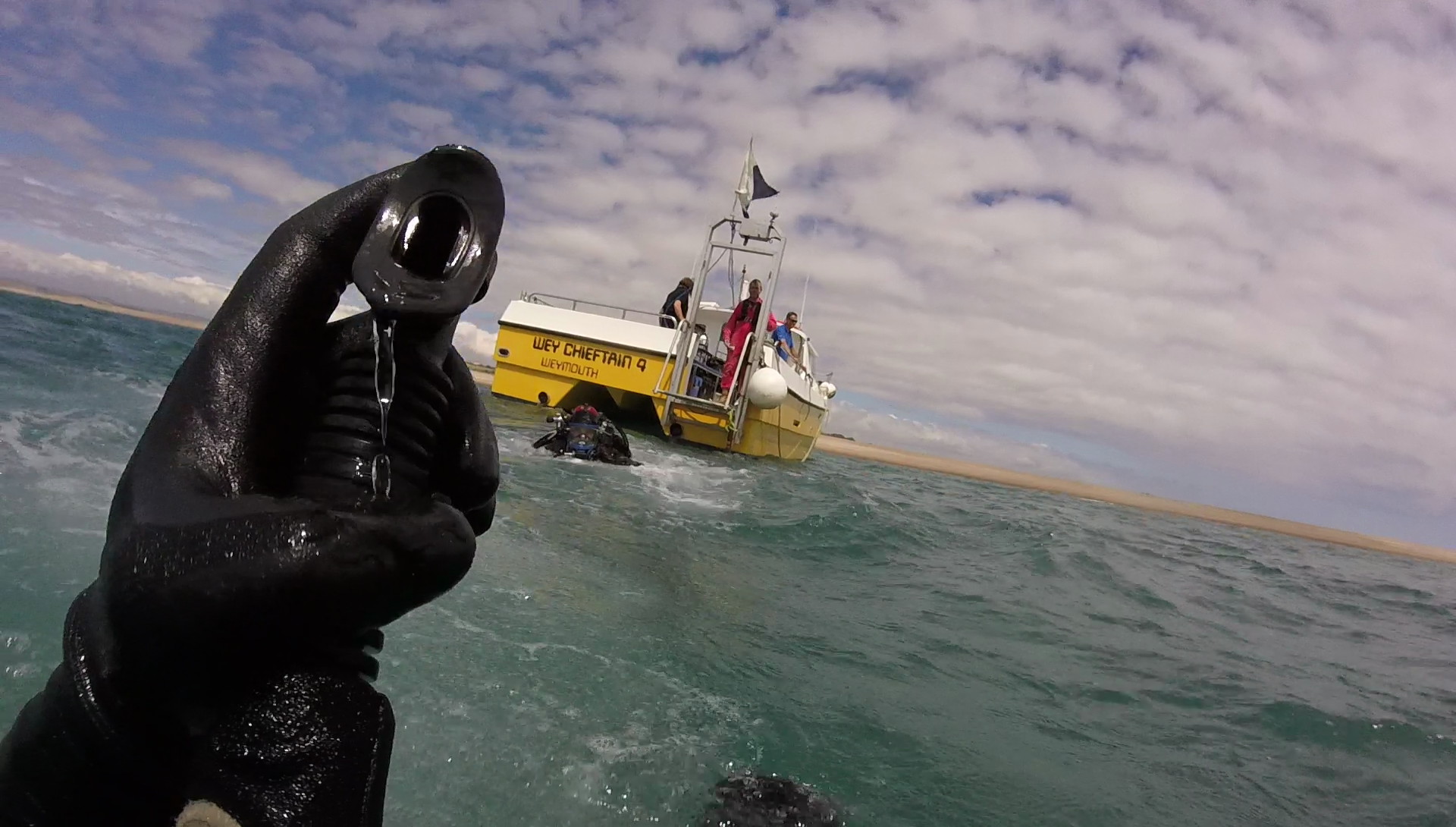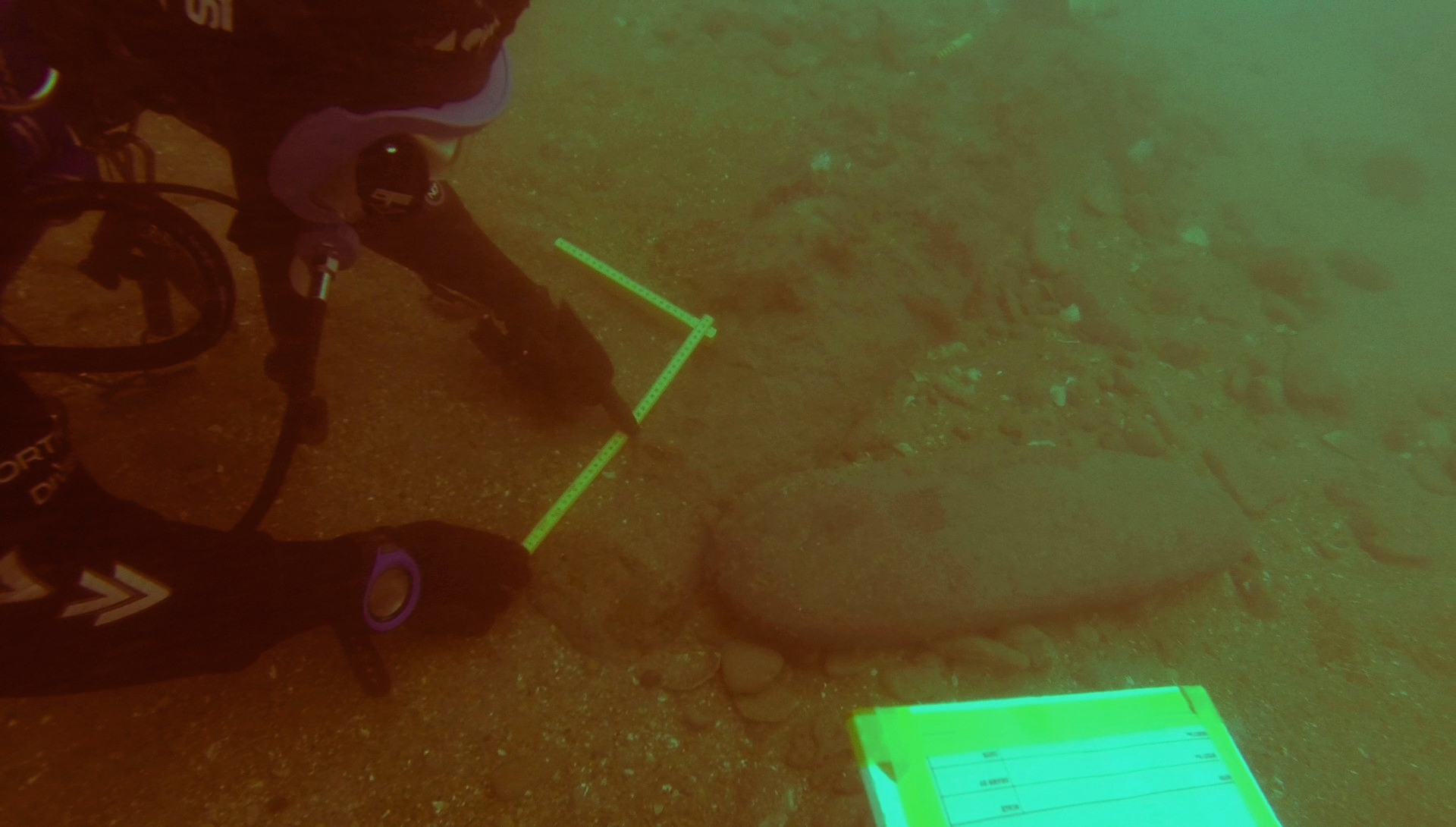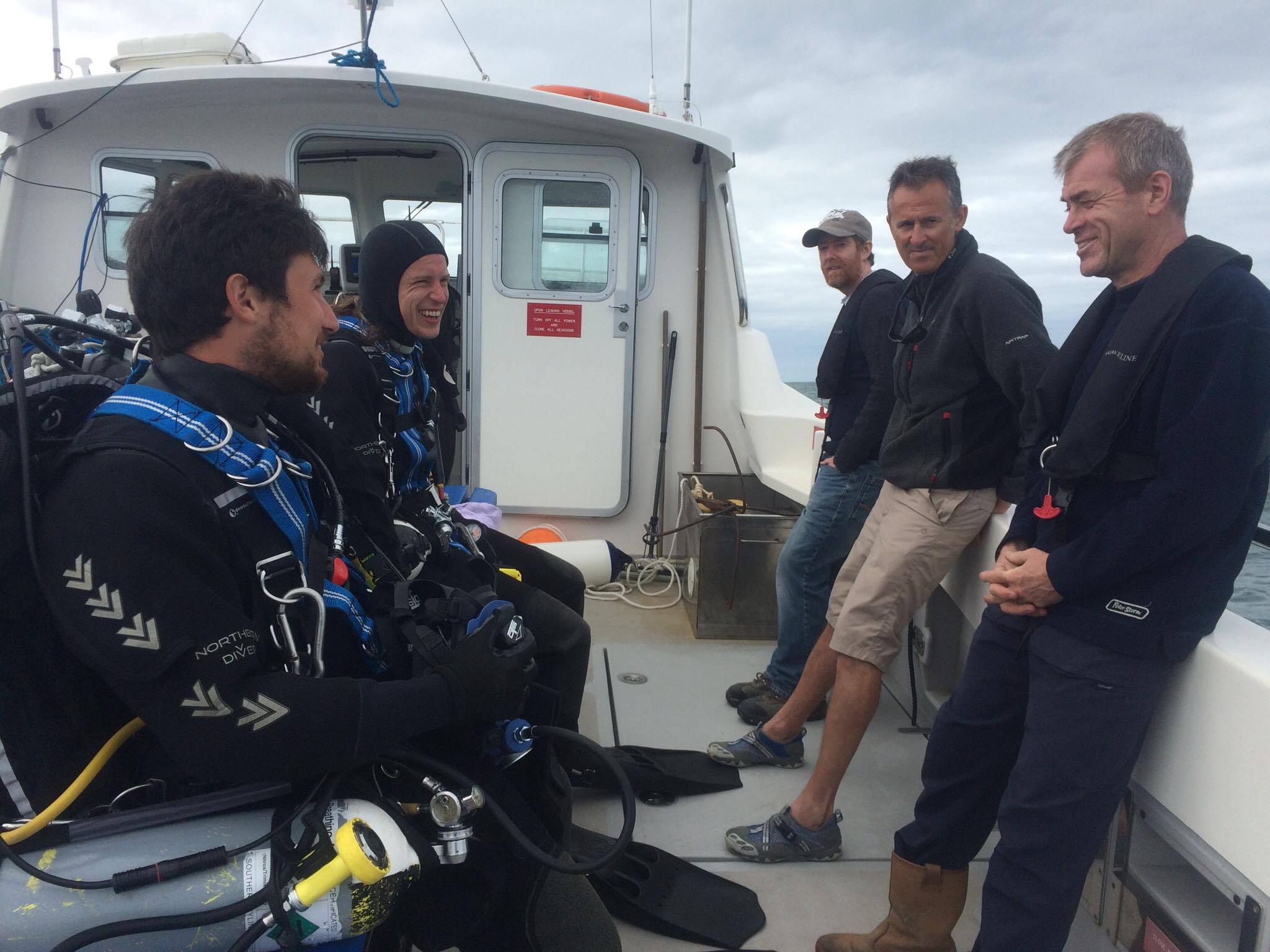
From 22 to 30 July 2016, Wessex Archaeology’s Coastal & Marine staff were based in Weymouth undertaking fieldwork for our client, Historic England. In the safe hands of skipper Richard Bright-Paul, Chairman of The Shipwreck Project, on-board their vessel Wey Chieftain IV, Wessex divers sought to document the remains of two wreck sites.
The first of these, tentatively identified as the Alexander, is located in roughly 22 m of water off Chesil Beach, about a 1-hour steam west of Weymouth around the Portland Bill. The Alexander was built in 1803 in India and, while on route from India to London in March 1815, became stranded on Chesil Beach during a harsh gale. The Shipwreck Project had previously recorded mortar balls and a tusk from the vicinity of the site and knew of the location of four cannon and an anchor.

Divers breathing Nitrox (EAN32) used a diver tracking system to position each cannon using GIS. They also took measurements of key features of the cannon, such as the diameter of the muzzle and breech, length from muzzle to breech, details of the cascabel and any evidence of trunnions and reinforcing rings. These measurements are the best way to identify the size of the cannon and possibly the vessel to which they belonged. Due to the short slack time between tides, a drop-down camera was also deployed to gain more ‘dive’ time on site.
The second wreck site, dubbed the ‘Fog Wreck’ by The Shipwreck Project, at approximately 28 m depth, is located an hour east of Weymouth past the spectacular coast featuring Durdle Door. This wreck site includes two large cannon and two smaller signal cannon, as well as a possibly associated anchor. The recording methods for these cannon were the same – although tides in this location only allowed for a 20-minute window of diving during slack water.

While working on this site we were visited by Historic England’s Data Team Maritime Officer, Hefin Meara, who provided topside support, and also Jane Maddocks, the Underwater Heritage Advisor for BSAC, who joined Wessex Archaeology’s divers in recording a cannon. On the final day of work – The Shipwreck Project divers Richard and Sue were also able to join Wessex Archaeology divers on the site while The Shipwreck Project founder, Grahame Knott, took over skippering.
Between 5am sunrise starts to catch the slack water and motoring out of harbour through the middle of the film set for Hollywood blockbuster, ‘Dunkirk’, Weymouth proved to be putting on its best summer holiday season weather. Luckily the dive team could escape underwater to avoid the crowds!